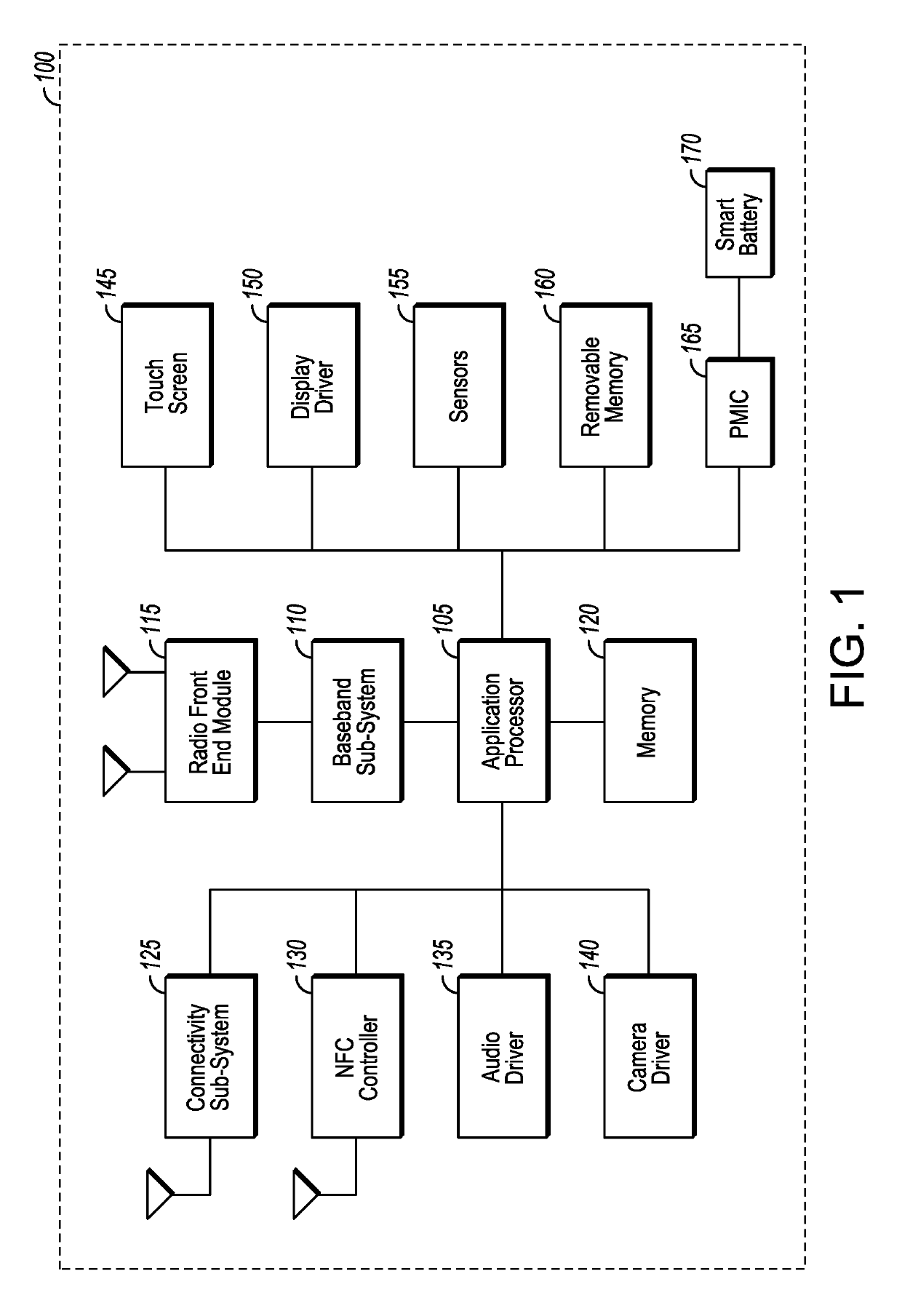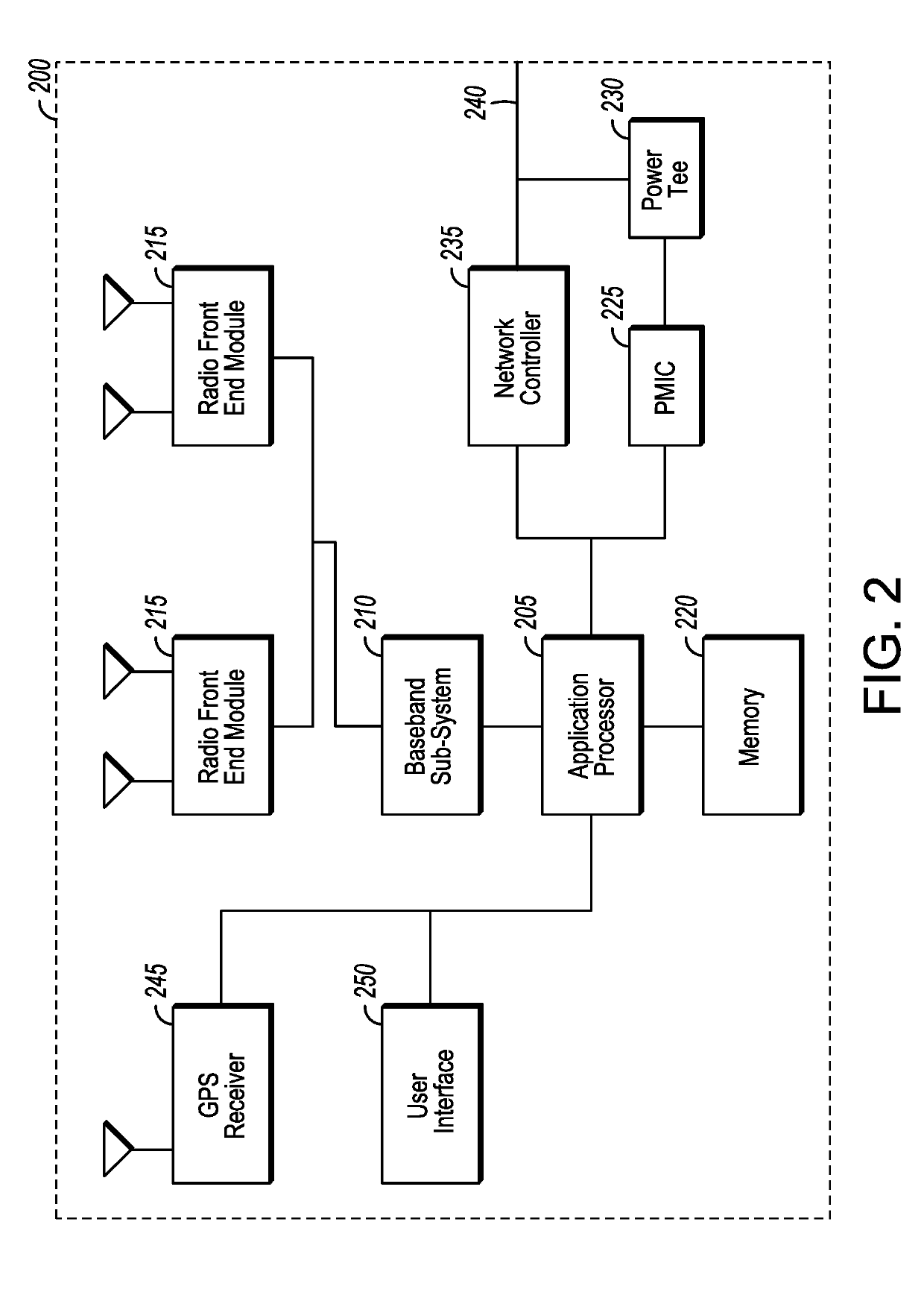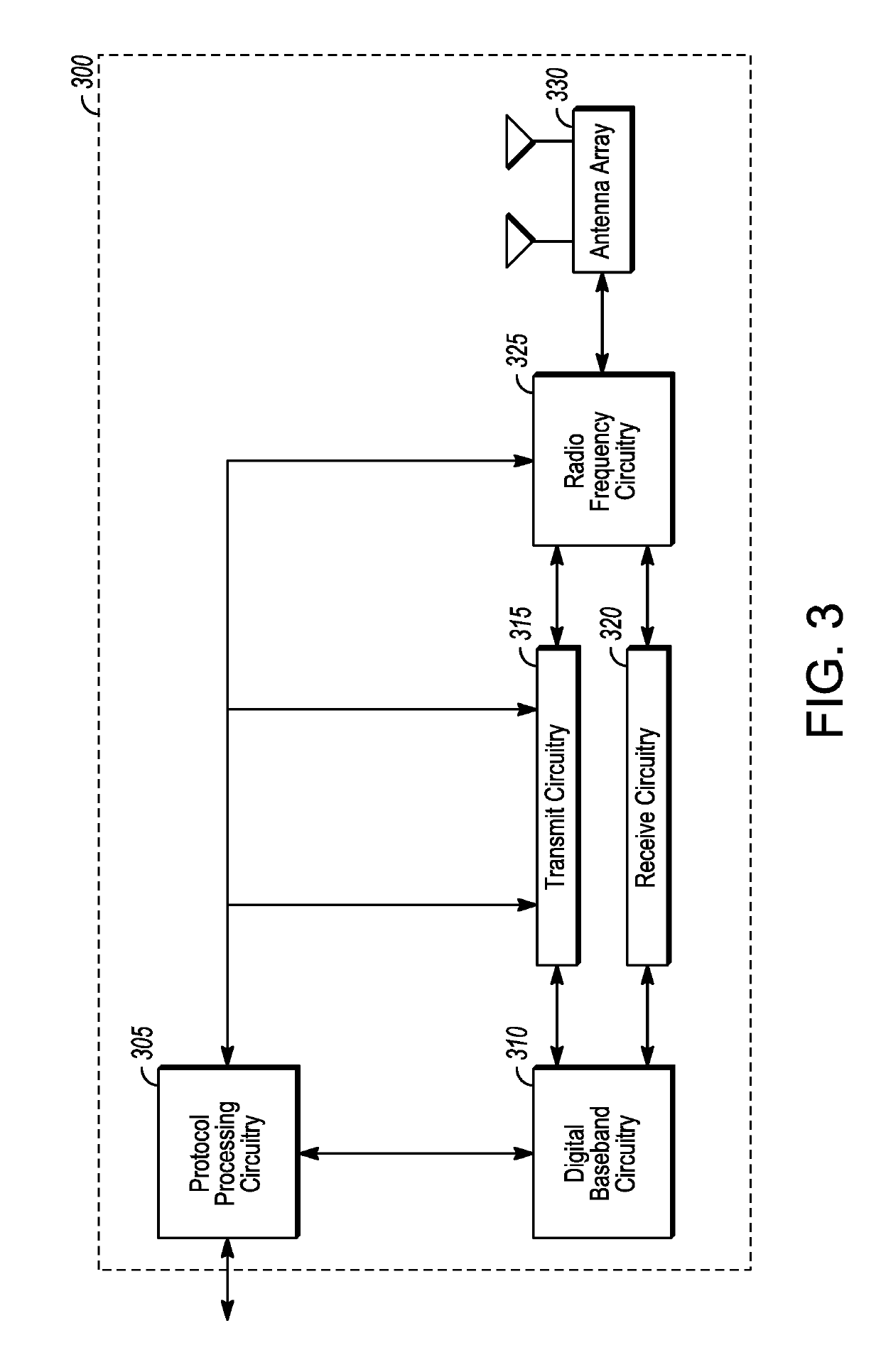Single registration mode support for interworking between 5gc and epc
a single registration mode and support technology, applied in the field of radio access networks, can solve problems such as interoperability challenges, registration issues that may occur, and continue to abound in existing systems
- Summary
- Abstract
- Description
- Claims
- Application Information
AI Technical Summary
Benefits of technology
Problems solved by technology
Method used
Image
Examples
examples
[0155]Example 1 is an apparatus of a user equipment (UE), the apparatus comprising: processing circuitry, wherein the UE is configured for operation in either a single registration mode or for operation in a dual registration mode, wherein a common registration for Evolved Packet System (EPS) Mobility Management (EMM) of an evolved packet core network (EPC) and 5th generation Mobility Management (5GMM) of a core network (5GC) is maintained in the single registration mode, the EPC is accessed in an S1 mode and the 5GC is accessed in an N1 mode; during an intersystem change from N1 mode to S1 mode, the processing circuitry is arranged to, prior to performance of an Attach procedure, map a protocol data unit (PDU) session context to a default EPS bearer context of a packet data network (PDN) connection and set a state of the default EPS bearer context, wherein: the default EPS bearer context is activated during the Attach procedure by transmission of a PDN CONNECTIVITY REQUEST message ...
PUM
 Login to View More
Login to View More Abstract
Description
Claims
Application Information
 Login to View More
Login to View More - R&D
- Intellectual Property
- Life Sciences
- Materials
- Tech Scout
- Unparalleled Data Quality
- Higher Quality Content
- 60% Fewer Hallucinations
Browse by: Latest US Patents, China's latest patents, Technical Efficacy Thesaurus, Application Domain, Technology Topic, Popular Technical Reports.
© 2025 PatSnap. All rights reserved.Legal|Privacy policy|Modern Slavery Act Transparency Statement|Sitemap|About US| Contact US: help@patsnap.com



